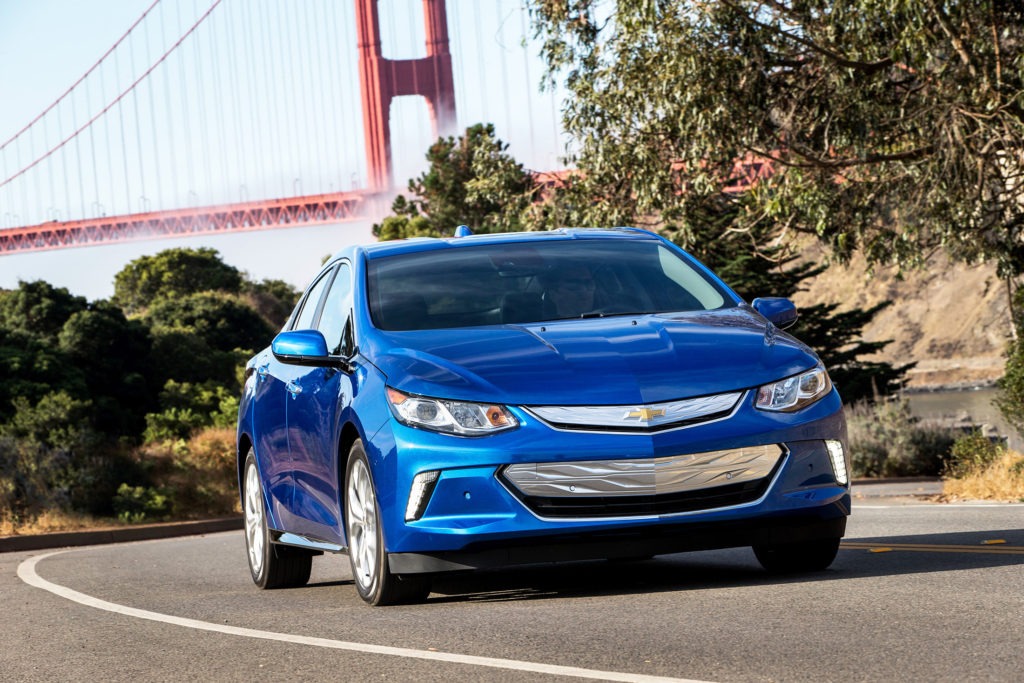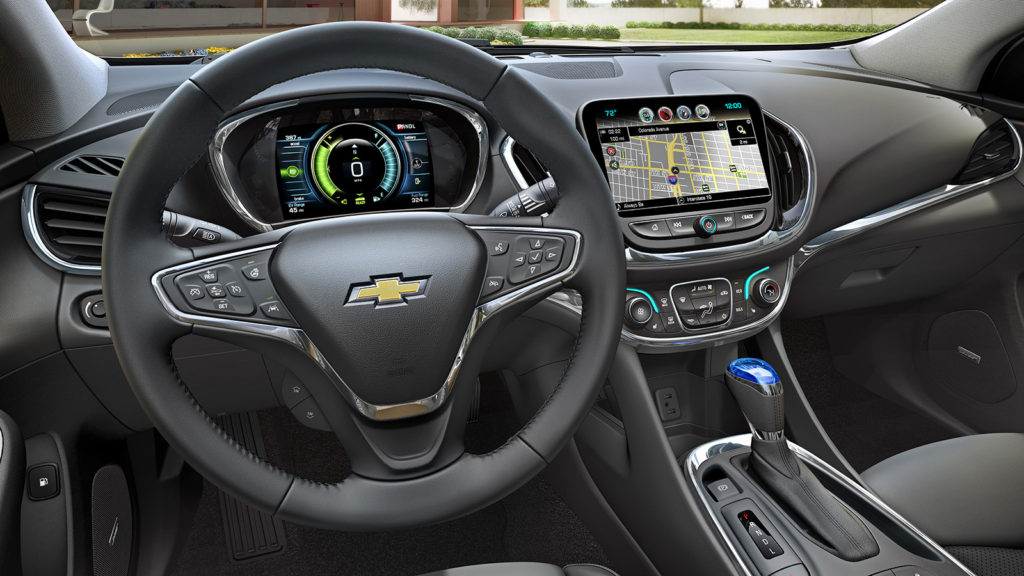Cargazing
By Derek Price
It’s an unfortunate fact of automotive life that some of the most revolutionary, influential vehicles also turn out to be sales flops.
While the original Chevrolet Volt didn’t quite plunge to “flop” status, it also never sold in nearly the numbers that such an engineering masterpiece deserves. In my mind, it falls into the same category as the Tucker 48 or the Tatra 77, cars so ahead of their time that many people today haven’t heard of them.
But you should hear about the Volt because it’s brilliant, and an all-new, second-generation design makes it even better.
For some background, the Volt was the first electric car I drove that felt like an actual car when it came out in 2010. Others drove like glorified bicycles with wheezy motors, flimsy frames and skittish tires. When the Volt hit the market, though, it drove like a real car, and a good one at that, with great acceleration, handling and road feel.
Yes, it could drive under pure electric power, but more importantly it came with a gasoline engine that could keep it running after the batteries ran down. It cured the problem that all electric cars face: range anxiety.

New styling makes the all-new Chevrolet Volt more eye-catching than before, with more sculpted sides and a sleeker hood. It remains an electric car that can use gasoline to extend its range, now all the way to 420 miles.
The new Volt makes it even better with a claimed electric range of 53 miles, or 420 miles if you include where the gasoline engine can take you. That means you can keep it charged up to run like any electric car for local trips, then use the extended gas range when you need it for longer runs down the highway. In that case, you can drive it and fuel it like a normal gasoline-powered car.
The improved electric range comes courtesy of some mind-blowing engineering magic. The new Volt’s two-motor drive unit is not only more powerful than the old one but also up to 12 percent more efficient, GM claims, all while weighing 100 pounds less than its equivalent in the old model.
That brings us to the one true weakness of the old Volt and the thing I think kept it from selling in bigger numbers: the body styling.
It’s not that the Volt was an ugly car. It’s that it was drab for such a revolutionary, potentially world-changing vehicle. It didn’t look as weird and unusual as, say, the Toyota Prius, even though the mechanical guts underneath the skin were far more radical.
The body ought to look like one of the most futuristic cars on the road because, well, that’s exactly what it is. That’s one lesson I wish the Volt would pick up from Tesla. Anyone who strives to sell a “car of the future” should make sure it looks the part.
While it’s not as outlandish as I’d like to see it, the styling takes a huge step in the right direction on this new model. It’s eye-catching and sleek, drawing on the original Volt’s concept-car roots while also managing to fit in with Chevrolet’s contemporary family looks. It won’t seem too out of place on the dealership floor next to Impalas and Malibus, yet it still manages to stand out as something special.
And special it is.
Here’s how I see it. If you compare most BMWs to their counterpart at Chevrolet, the BMW wins every time. And they should, being an expensive German luxury brand. You’d fully expect a $33,000 3-Series to beat a $21,000 Malibu, for example.
But when I compare the Volt to another electric car I drove in the past year — the BMW i3 — the American car blows it out of the water in comfort, highway performance and drivetrain sophistication. That’s despite a huge price difference in my test cars (around $54,000 for the i3 vs. $40,000 for the Volt).
In this case, it makes for words you’ll rarely see an automotive critic write: I’d much rather drive the Chevy than the BMW.
At a Glance
What was tested?
2016 Chevrolet Volt Premier ($37,570). Options: Driver Confidence 1 package ($495), Driver Confidence 2 package ($495), Chevrolet MyLink radio ($495), Siren Red Tintcoat paint ($395). Price as tested (including $875 destination charge): $40,325
Wheelbase: 106.1 in.
Length: 180.4 in.
Width: 71.2 in.
Height: 56.4 in.
Drivetrain: 1.5-liter four cylinder engine (101 hp), 110 kW electric motors (149 hp)
Transmission: Voltec electric drive system
Fuel economy: 106 mpg-e
RATINGS
Style: 8
Performance: 8
Price: 10
Handling: 8
Ride: 8
Comfort: 9
Quality: 9
Overall: 9
Video Review:
2016 Chevrolet Volt
bit.ly/2016Volt
Why buy it?
With a starting price of $33,220, it’s one of the most revolutionary, forward-thinking cars you can buy today. It combines 53 miles of electric range with a gasoline engine that allows you to drive it like a “normal” car whenever you want.

